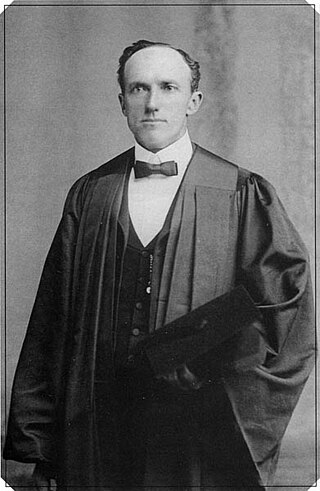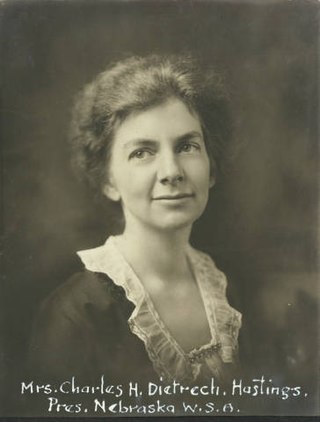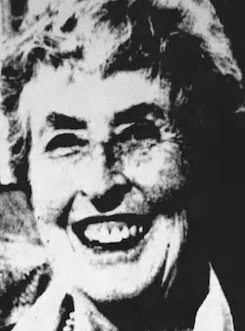Related Research Articles

The Santa Fe Trail was a 19th-century route through central North America that connected Franklin, Missouri, with Santa Fe, New Mexico. Pioneered in 1821 by William Becknell, who departed from the Boonslick region along the Missouri River, the trail served as a vital commercial highway until 1880, when the railroad arrived in Santa Fe. Santa Fe was near the end of El Camino Real de Tierra Adentro which carried trade from Mexico City. The trail was later incorporated into parts of the National Old Trails Road and U.S. Route 66.

Fort Union National Monument is a unit of the National Park Service of the United States, and is located north of Watrous in Mora County, New Mexico. The national monument was founded on June 28, 1954.

Mogollon culture is an archaeological culture of Native American peoples from Southern New Mexico and Arizona, Northern Sonora and Chihuahua, and Western Texas. The northern part of this region is Oasisamerica, while the southern span of the Mogollon culture is known as Aridoamerica.

The Palace of the Governors is an adobe structure built in the Territorial Style of Pueblo architecture on Palace Avenue in Santa Fe, New Mexico. Located within the Santa Fe Historic District along the Santa Fe Plaza between Lincoln and Washington avenues, it has served as the seat of government for New Mexico for centuries, having been established as the capitol building of Nuevo México in 1610.

The Museum of International Folk Art is a state-run institution in Santa Fe, New Mexico, United States. It is one of many cultural institutions operated by the New Mexico Department of Cultural Affairs.

Edgar Lee Hewett was an American archaeologist and anthropologist whose focus was the Native American communities of New Mexico and the southwestern United States. He is best known for his role in gaining passage of the Antiquities Act, a pioneering piece of legislation for the conservation movement; as the founder and first director of the Museum of New Mexico; and as the first president of the New Mexico Normal School, now New Mexico Highlands University.

Fort Stanton was a United States Army fort near Lincoln, New Mexico.

The Santa Fe Plaza is a National Historic Landmark in downtown Santa Fe, New Mexico in the style of traditional Spanish-American colonial cities. The plaza, or city square is a gathering place for locals and also a tourist attraction. It is home to annual events including Fiestas de Santa Fe, the Spanish Market, the Santa Fe Bandstand, and the Santa Fe Indian Market.

The Museum of Indian Arts and Culture is a museum of Native American art and culture located in Santa Fe, New Mexico. It is one of eight museums in the state operated by the New Mexico Department of Cultural Affairs and is accredited by the American Alliance of Museums as part of the Museum of New Mexico system. The museum and its programs are financially supported by the Museum of New Mexico Foundation.

The following is an alphabetical list of articles related to the U.S. state of New Mexico.

Santa Fe is the capital of the U.S. state of New Mexico. The name "Santa Fe" means 'Holy Faith' in Spanish, and the city's full name as founded remains La Villa Real de la Santa Fé de San Francisco de Asís.

The School for Advanced Research (SAR), until 2007 known as the School of American Research and founded in 1907 as the School for American Archaeology (SAA), is an advanced research center located in Santa Fe, New Mexico, U.S. Since 1967, the scope of the school's activities has embraced a global perspective through programs to encourage advanced scholarship in anthropology and related social science disciplines and the humanities, and to facilitate the work of Native American scholars and artists. SAR offers residential fellowships for artists and scholars, and it publishes academic and popular non-fiction books through SAR Press.

The New Mexico History Museum is a history museum in Santa Fe, New Mexico. It is part of the state-run Museum of New Mexico system operated by the New Mexico Department of Cultural Affairs. Opened in 2009, the museum houses 96,000 square feet (8,900 m2) of permanent and rotating exhibits covering the history of New Mexico from ancient Native American cultures to the present.

Margretta Dietrich was an American suffragette and activist. She served as resident of the Nebraska Woman's Suffrage Association in 1919 and Chairman of the Nebraska State League of Women Voters in 1920. Following the ratification of the 19th amendment, she went on to advocate for the rights of Indigenous Americans in New Mexico. She was the president of the New Mexico Association of Indians Affairs for more than 20 years and helped found and was the trustee for several organizations that advocated for Native Americans.
The New Mexico State Register of Cultural Properties is a register of historic and prehistoric properties located in the state of New Mexico. It is maintained by the New Mexico Historic Preservation Division of the New Mexico Department of Cultural Affairs. The Cultural Properties Review Committee meets at least six times a year. The committee lists properties in the State Register and forwards nominations to the National Register.

The Governor Bent House is the historic home of Governor Charles Bent who served as the first United States territorial governor of New Mexico.

Marjorie Ferguson Lambert (1908–2006) was an American anthropologist and archaeologist, who primarily studied Native American and Hispanic cultures in the American Southwest. Her most known archeological excavation was the dig at Paa-ko located on the Galisteo Basin. She was a curator of the Museum of New Mexico from 1937 to 1969 and published numerous papers regarding the cultures of the Puebloan peoples. Her work was acknowledged for its technical detail and cultural sensitivity by the Society for American Archaeology and the New Mexico Office of Cultural Affairs.

Maria Chabot (1913–2001), was an advocate for Native American arts, a rancher, and a friend of Georgia O'Keeffe. She led the restoration of her house in Abiquiú, New Mexico, and took the photograph of O'Keeffe entitled Women Who Rode Away, in which the artist was on the back of a motorcycle driven by Maurice Grosser. Their correspondence was published in the book Maria Chabot—Georgia O'Keeffe: Correspondence 1941-1949.

Jesse Logan Nusbaum (1887–1975), was an American archaeologist, anthropologist, photographer and National Park Service Superintendent who lived in the American Southwest, where he made significant achievements in the identification, documentation, restoration and preservation of the region's Native American and Spanish Colonial architectural and cultural heritage.

Sarah Roberts "Sallie" Wagner was an American anthropologist, businesswoman, activist, filmmaker, and arts patron. She was one of the founding members of the Society for American Archaeology in 1934.
References
- ↑ "New Mexico Administrative Code". The Commission of Public Records. Retrieved 29 January 2018.
- ↑ "Section 18-3-2 NMSA 1978". NMOneSource. New Mexico Compilation Commission. Retrieved 6 August 2019.
- ↑ "Museums and Historic Sites". Museum of New Mexico. New Mexico Department of Cultural Affairs. Retrieved 21 January 2015.
- ↑ Elliott, Malinda (1987). The School of American Research : A History. School of American Research.
- ↑ Hartley, Cody (2005). Art in an Arid Climate : The Museum of New Mexico and the Cultivation of the Arts in Santa Fe. Santa Barbara: University of California. pp. 208–209.